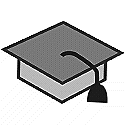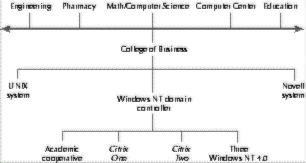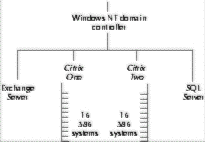

Located in the Portneuf River valley in Pocatello, Idaho State University (ISU) serves more than 12,000 students with a wide array of undergraduate and graduate programs in the arts and sciences, health professions, business, education, engineering, and pharmacy. Also part of ISU is the School of Applied Technology, which meets the needs of business and industry for well-trained employees. Students from every county in Idaho, all 50 states, and more than 40 foreign countries find an abundance of top-flight academic programs at ISU. (This description is taken from the ISU Web site at http://www.isu.edu.)
On the Web site at ISU, you can also find information about the College of Business, which offers a curriculum in computer in-formation systems. The curriculum is designed specifically to prepare students to design and manage computer-based information systems.
As with almost every other school and college in the country, ISU must find ways to keep its courses as current as possible to ensure the competitiveness of its students. To do so, the university must find ways to use the limited funds allocated by the state and small supplements from lab fees to acquire rapidly changing hardware and software.
Presenting problem The Computer Information Systems (CIS) department at ISU resides within the College of Business (http://cob.isu.edu). Because the College of Business is fully AACSB accredited at both the undergraduate and graduate level, an emphasis on quality programs and current technology is imperative. The CIS curriculum supports students from four academic groups:
The challenge: Rapidly deploy tools to support courses with cur- rent technology.
In addition, the CIS department reaches out to several regional high schools to provide access to programming resources. The WinFrame server allows students to sample modern programming technology without having to come to the ISU campus.
This broad spectrum of users provides a diverse population of instructional opportunities. Each semester, 800 ISU students have access to the system, with over 200 students using elements of the two Citrix WinFrame servers daily.
Hardware and software The thin-client/server networking environment at ISU includes:
ISU deploys Visual Basic and Microsoft Office to an instructional lab.
The CIS program in the College of Business at ISU uses the Win-Frame server for deploying Visual Basic version 5.0, Visual C++, Microsoft Visual J++, Microsoft Access, and Microsoft Office.
Solution and results The networking solution at ISU addresses diverse computing needs. (See Figure 8-1.) The Computer Center provides central access to a PPP dial-up pool, the Internet, and backbone support for the entire campus. The College of Business supports a large connected network for both faculty and student use. Since College of Business students need to be familiar with the most current hardware and software, the college has focused its efforts on Microsoft Windows NT enterprise solutions including Microsoft Exchange and SQL Server. Citrix WinFrame plays a critical role in making current technology available to the students.
FIGURE 8-1
The networking environment at ISU

To simplify access control to all systems, ISU has devoted a Micron P200 with 64 MB of RAM and 9 GB of disk space as a Windows NT domain controller. This system validates access to all computing assets, including both WinFrame servers. The server Citrix One supports an instructional laboratory as well as students from other colleges, and the Citrix Two supports an instructional laboratory in the College of Business.
In the past, providing this level of support to the College of Business has proven expensive. Normally, to support a 16-station laboratory, at least a P-200 with 16 MB of RAM and a 1-GB hard disk would be needed. These systems would have to be replaced annually. WinFrame provides the college with an affordable solution to the problem of access to technology.
Each student station is a diskless 80386-25 station with 8 MB of RAM, a 10-base T card, and a VGA card. (See Figure 8-2.) The workstations in the laboratory were built from the scraps of an earlier system upgrade. These stations provide seamless access to all the university’s computing assets. For example, students in introductory courses can write applications in Visual Basic or Visual C++ using ancient MS-DOS hardware systems while more advanced students can write Microsoft Access programs or SQL Server applications using advanced software technology. All students are able to develop reports and presentations using Microsoft Office 97. The WinFrame systems have allowed the College of Business to expand its enrollment by 29 percent while holding the hardware budget constant.
FIGURE 8-2
Instructional lab configuration at ISU

The Citrix One server is a NEC/Zenith dual P-200 with 128 MB of RAM and a 9-GB disk; the Citrix Two server is a Micron dual P-200 server with 128 MB of RAM and 18 GB of hard disk space. Via the domain controller, the two Citrix systems have access to a Hewlett-Packard LH series server with a 40-GB disk array in a RAID 5 configuration and a CD-ROM tower. The two Citrix servers are configured to provide redundant service in the event that one hardware suite crashes.
Student evaluations of the thin-client/server system are positive. Students appreciate the increased access to modern systems and languages such as Visual Basic version 5.0 and SQL Server.
Generally speaking, thin-client/server access to the latest software can revitalize academic coursework, allowing instructors to teach students the latest programming tools and computing concepts and making the students more marketable after they complete their courses of study. This knowledge will also reduce the training time required by an employer to get students up-to-date on the latest tools and techniques.